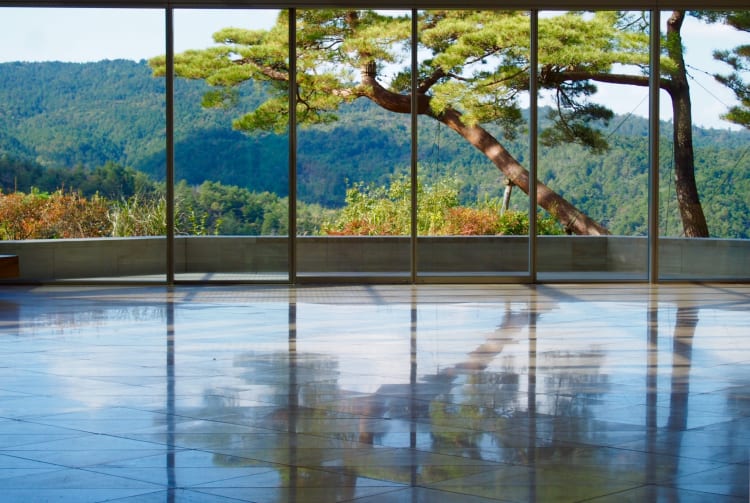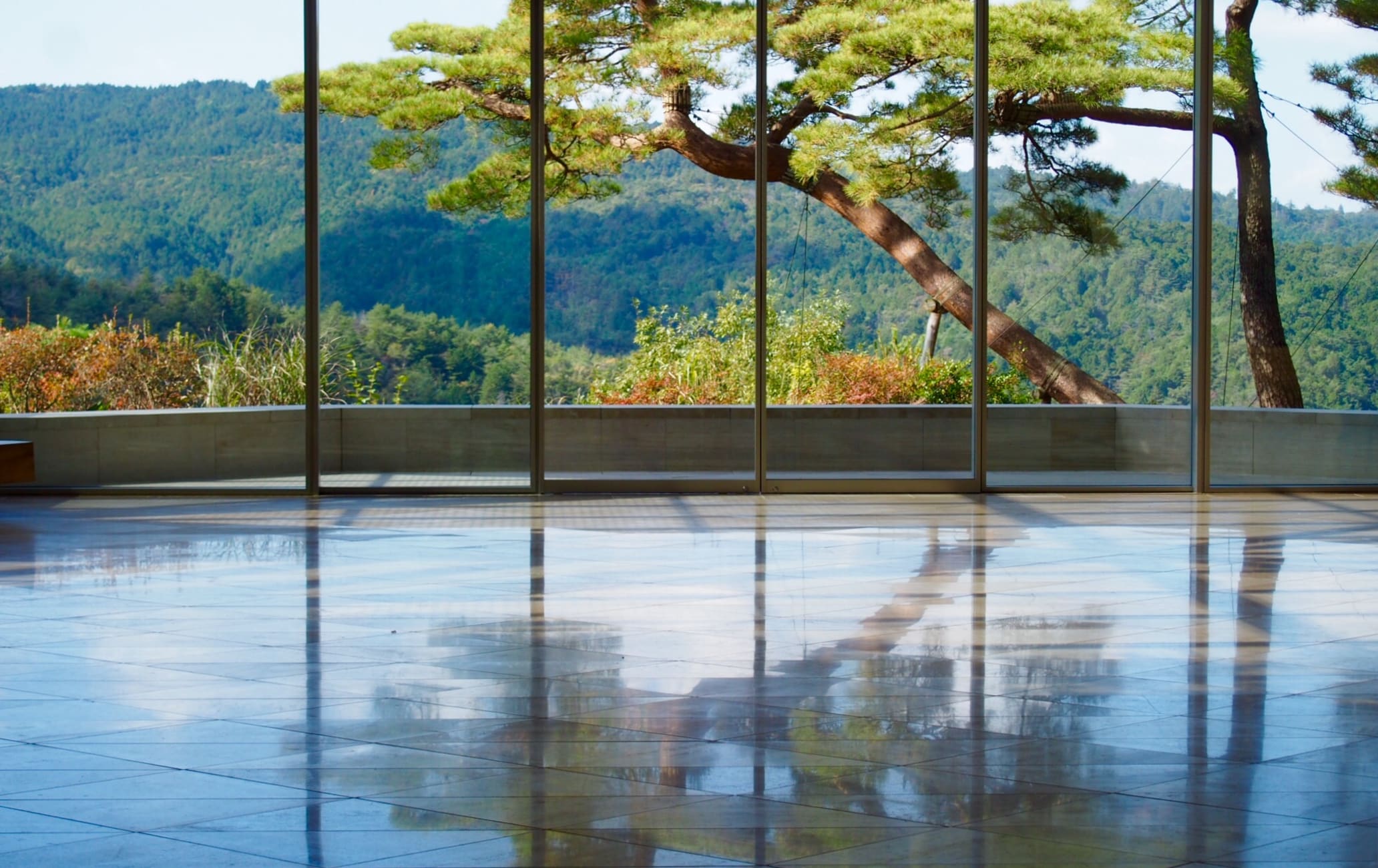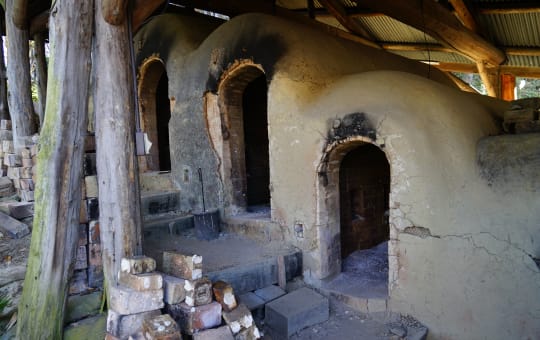A real-world Shangri-La
Miho Museum is situated amid the abundant natural beauty of the mountains of Shigaraki and was designed by Chinese-American architect I.M. Pei, best known for designing the glass pyramid at the Louvre Museum in Paris. Pei designed an evocative, serene approach to the museum inspired by the ethereal utopia described in the Taohua Yuan Ji (The Peach Blossom Spring), an ancient work written by Chinese poet Tao Yuanming. Visitors are led down a walkway enveloped by weeping cherry trees, through a tunnel, and over a suspension bridge before arriving at the museum.
How to Get There
From Kyoto, take the JR Tokaido main line to Ishiyama Station.
Then take Teisan Bus 150, which is clearly marked for the Miho Museum (50 minutes). The bus departs from stop number three, and its destination is clearly marked in both Japanese and English.

Quick Facts
About 250 to 500 works are displayed at a time
Around three-quarters of the building is carved into the mountain
A Seeker of Beauty
The collection started by the founder, Mihoko Koyama (1910–2003), is designed to fulfill her vision of promoting beauty, peace and joy through art. It includes a wide range of Japanese art, along with ancient art from areas such as Egypt, Greece, Rome, China, West Asia and South Asia.
Architecture as stunning as the work it houses
About 80 percent of the Miho Museum was built underground to preserve the surrounding natural environment. Much of the structure lies buried in the mountainside out of sight.
Stepping into the understated entrance, visitors find themselves enclosed by gentle honey-colored limestone walls, with light pouring in from a glass roof amid a panorama of mountains rolling gradually into the distance. The entire roof is constructed from space frames made up of geometric combinations of triangles, a shape selected for its simplicity. The large space formed by the roof highlights its outstanding structural beauty.
Upon leaving the exhibit area after being immersed in Eastern and Western artworks, visitors are given the feeling of stepping into the natural world from the space's ever-present natural scenery and light.
The building was designed so that visitors would enjoy an introspective space while experiencing beauty in its various forms. As Pei has stated, “I think you can see a very conscious attempt on my part to make the silhouette of the building comfortable in the natural landscape.”

* The information on this page may be subject to change due to COVID-19.

































































